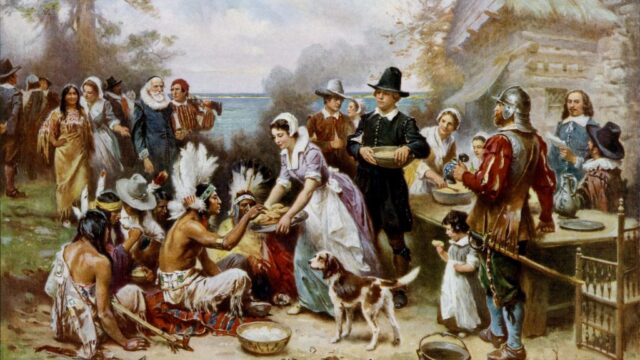Whites Are the Native Americans

In recent years, new genetic discoveries have reshaped the story of how the Americas were first settled. Advanced DNA testing has revealed that nearly one-third of the genetic ancestry of Native Americans derives from ancient Eurasia, a finding that challenges the long-standing belief that their ancestors came solely from East Asia by way of the Bering Land Bridge about fifteen thousand years ago. This revelation has startled many scholars and forced a reconsideration of long-accepted migration theories. For much of the twentieth century, the consensus held that Native Americans descended almost entirely from East Asian populations that moved gradually into the Western Hemisphere. However, genetic evidence now indicates a more intricate origin, one that involves both East Asian and ancient Eurasian components, suggesting that the peopling of the Americas was a far more complex and interconnected process than previously thought.
Such discoveries are part of a broader transformation in the way historians and anthropologists view pre-Columbian America. The new picture that emerges is not of a tranquil Eden populated by peaceful peoples living in perfect harmony with nature, but of a continent alive with political ambition, warfare, and cultural dynamism. Native American societies were extraordinarily diverse, ranging from nomadic bands to powerful confederations , and their histories were marked by both creativity and conflict.
It is now clear that many Native American societies were builders of their own empires. They were not merely passive victims of European colonization but active participants in shaping the geopolitical landscape of North America. The Comanches, for example, constructed what historian Pekka Hämäläinen has called a “hegemonic empire on the Southern Plains.” During the eighteenth and nineteenth centuries, they used their mastery of horsemanship, trade, and warfare to dominate weaker tribes, monopolize regional commerce, and even restrain the expansion of the Spanish Empire. The Apaches pursued similar ambitions, alternating between resisting Spanish power and asserting dominance over smaller indigenous groups. In some cases, they enslaved rival peoples such as the Jumanos and Pawnees, selling captives to Spanish settlers in New Mexico.
Other Native groups followed comparable paths of conquest and expansion. The Iroquois Confederacy in the northeast conducted organized military campaigns to subjugate neighboring peoples, integrating captives into their societies or holding them as slaves. Farther south, the Aztecs built an empire that extended through much of central Mexico, imposing tribute and exacting human sacrifices from the tribes they conquered. In the Great Plains and the American Southwest, the Sioux, Comanche, and others were engaged in continual warfare, seeking to expand their territory and influence. These examples reveal a continent shaped by power struggles, imperial rivalries, and complex systems of dominance long before the first Europeans arrived.
From this perspective, the popular claim that America is “stolen land” becomes much less certain. While European settlement undeniably altered the demographic and cultural landscape of the continent, the idea that the land was simply taken from a single, unified indigenous population overlooks a far more complicated history. Native American tribes had been contesting, exchanging, and conquering territory for centuries before any European arrived. Their borders shifted continuously, and their political alliances were as fluid and strategic as those of the European states that would later emerge.
In many cases, European and American expansion involved treaties and formal negotiations with Native leaders. These agreements reflected the realities of power, commerce, and diplomacy in a constantly changing world. To view all of American territory as “stolen” is to ignore the intricate web of conflict, exchange, and adaptation that defined the continent long before the modern United States existed. North America was never static; it was a shifting mosaic of peoples, each pursuing its own ambitions and defending its own interests.
When Europeans established permanent settlements along the Atlantic coast, they brought with them political institutions, legal systems, and philosophical traditions that would eventually give rise to a new kind of nation. The creation of the United States was the work of European-descended settlers who combined ideas from the Enlightenment with the practical experience of colonial life. The Founding Fathers, drawing on British political thought and classical learning, designed a constitutional republic that would become one of the most enduring political experiments in human history.
The indigenous peoples of North America had their own forms of governance, ranging from tribal councils to regional confederations, yet none possessed the unified political framework that could produce a nation-state on the scale of the United States. What emerged from the colonial era was something entirely new: a political order rooted in European civilization but adapted to the realities of a vast and untamed continent. The settlers and their descendants defined its borders, built its cities, and established the institutions that continue to shape American life.
In this sense, the European settlers and their descendants became the true natives of the political entity known as the United States. They were the ones who conceived of the idea of America as a nation, articulated its principles, and gave it enduring form. The United States did not arise spontaneously from the land itself but from the deliberate effort of a particular people who carried the traditions of Europe across the Atlantic and transformed them in a new environment.
The story of America, therefore, is not one of simple dispossession or moral abstraction. It is the story of competing civilizations, of encounters between ambitious and resourceful peoples, and of the eventual emergence of a distinct national identity. The land that became the United States was never the exclusive possession of any single group, and its political and cultural foundations were laid by those who built, organized, and imagined it into existence.
https://counter-currents.com/2025/10/whites-are-the-native-americans
